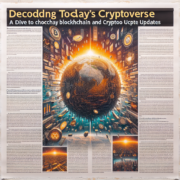A significant problem to the mass adoption of Bitcoin as a general means of payment for micropayments lies with the usability of the system. A Spanish hardware hacker has confronted these problems with an innovative solution. He has opted to use a proof-of-concept vending machine which accepts Bitcoin transactions through the use of the Lightning Network.
UNECONOMICAL MICROPAYMENTS
A simple concept such as a vending machine is a noteworthy test-case for Bitcoin micropayments. The stock would generally consist of low-value items, and customers demand instant fulfilment of purchases. Bitcoin (BTC) $6502.52 +0.47% stumbles when faced with either of these scenarios. Therefore, the ability to deal with both is a challenge.
The bitcoin transaction fees on 2 October 2018 was $0.23 per transaction. This makes the use of Bitcoin for micropayments essentially useless, as it is too uneconomical to be a viable payment solution. It is also important to note that during periods of high demand, fees can be even higher to guarantee the inclusion of the subsequent block that will need to be mined. Despite the higher costs, a transaction confirmation can take up to ten minutes to be verified.
THE BITCOIN LIGHTNING NETWORK PROBLEM-SOLVER
Lightning Network (LN) has been identified as the solution to many of Bitcoin’s problems. LN has recently been making waves in the industry. CoinGate made in public last month that 4000 of its merchants are now going to accept payments via the Lightning Network. Additionally, a swiss café has also recently announced a means of ordering and paying through the LN.
The Bitcoin blockchain is the foundation on which the LN is layered. The LN enables multiple transactions to occur on channels before the resulting compound transaction is written to the main chain. The LN has created the possibility to have instantaneous transactions made at significantly reduced fees, thus making micropayments that use bitcoin a feasible option.
THE VENDING MACHINE TEST-CASE
The ultimate test for the LN network is with the vending machine test-case. Ricardo Reis is a Spanish hardware hacker who has created a simulated vending machine which can accept Bitcoin as a means of payment from the customer’s Lightning-enabled wallet. The customer is then delivered an ice-cold glass of Coca-Cola, as has been demonstrated in videos online.
The vending machine idea is not perfect, as there are multiple limitations to Ricardo’s invention. However, this is not the concept that he was going for. Rather, he wanted to make a simple point. Ricardo was able to demonstrate that straightforward and small payment options are viable, by integrating a new system with existing technology. Thus, by building this payment facility into a commercial vending machine, is achievable with current technology.
Interestingly, all modern vending machines are already networked. This allows the system to monitor stock for efficient replenishment on a remote basis. The simple application of enabling bitcoin payments to be processed via the Lightning Network, could increase Bitcoin’s mass adoption and improve vending machine sales. This concept that is not exclusive to vending machines.
What are your thoughts on Ricardo’s vending machines? Do you know of any other examples of micropayments which have been built upon the bitcoin blockchain? Don’t hesitate to let us know your thoughts in the comments below!
Follow CoinBeat on Facebook, Twitter & Telegram
Subscribe to our CoinBeat Newsletter
Submit an article to CoinBeat
View live Marketcap Prices here





Comments